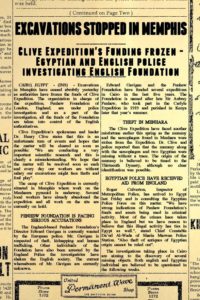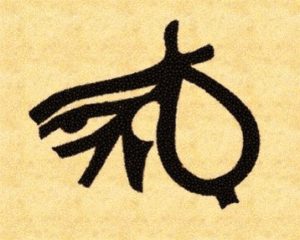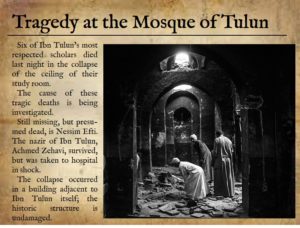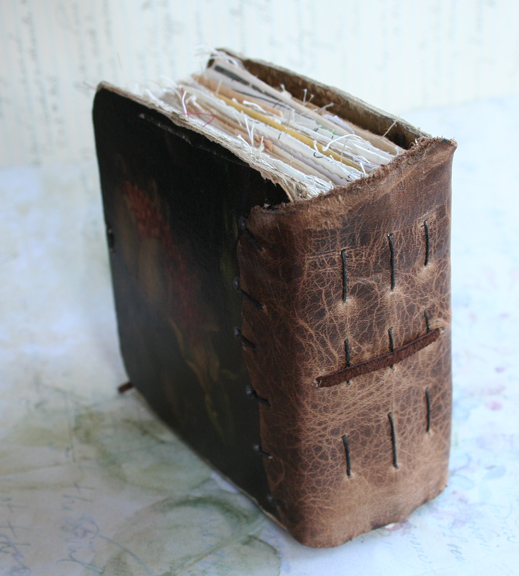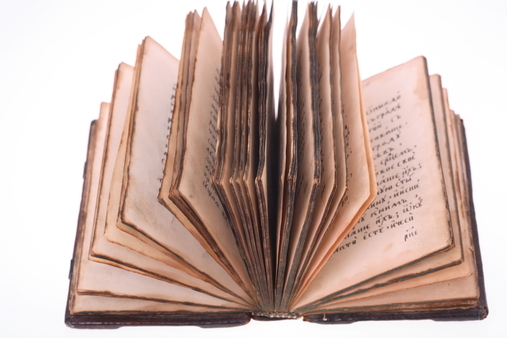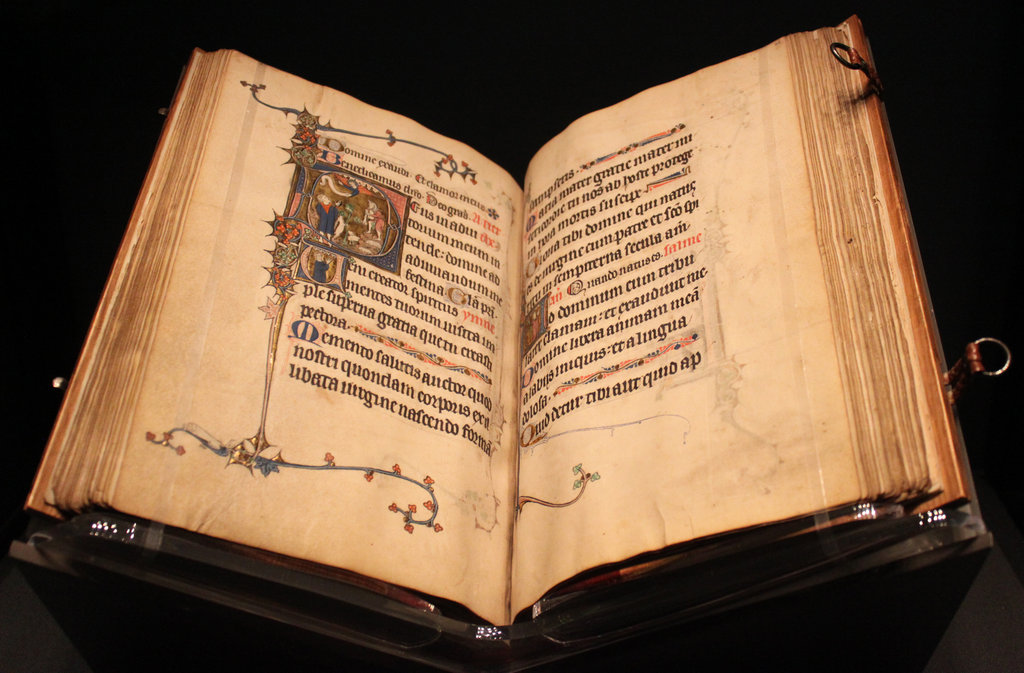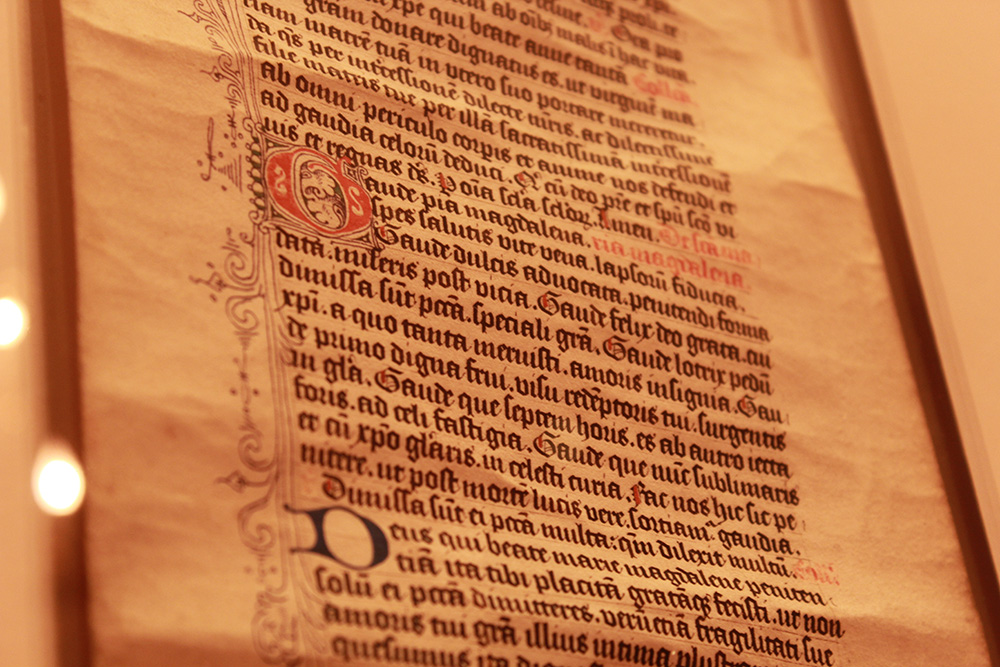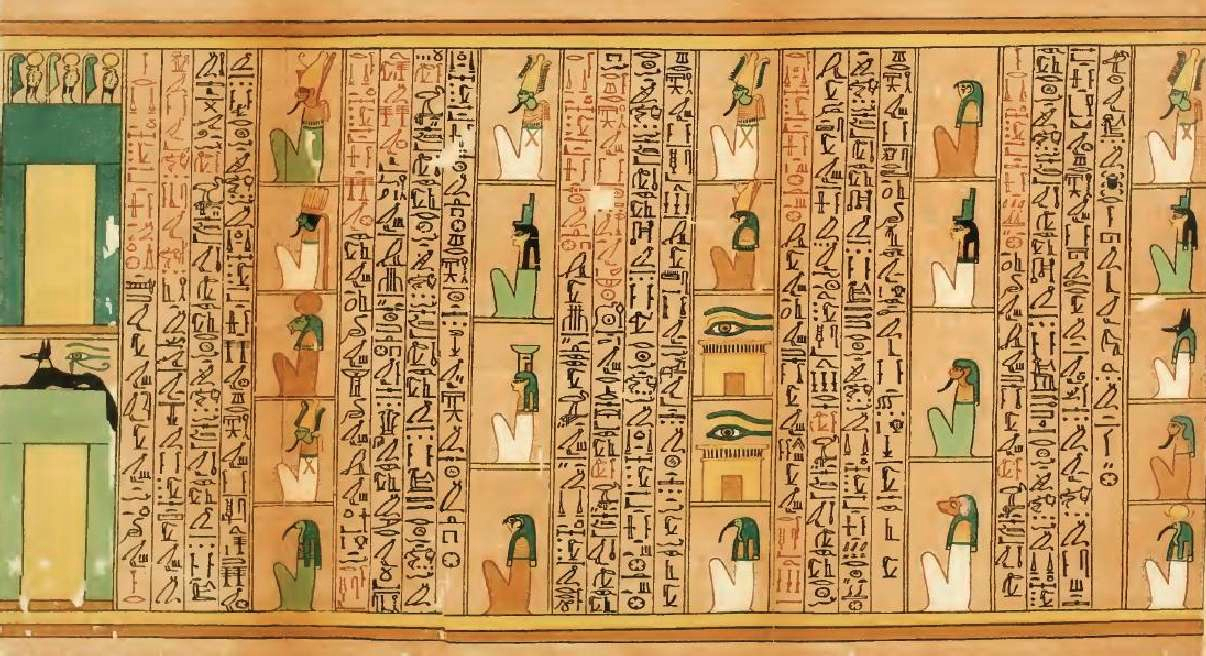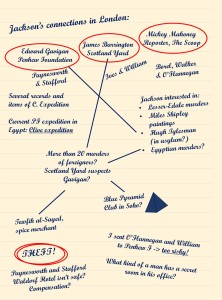(From the journal of Dr. Lawrence Wentworth Stafford, dated February 7. 1925)
I… I can’t get the images… the sounds.. out of my head. I – I think… I’m not sure what to think. I can’t do this now. I need to sleep.
—
The sleep won’t come. I can still hear the crunching sounds in my ears… bones? Was the girl eaten above me? The blood… Shower after shower, but I still am covered in blood. I try to scrub it off, but it won’t disappear. I… I need a drink.
—
If I had read this following passage a year, a month ago, I wouldn’t have given it further thought, just some ramblings of a deranged person, trying to catch attention in any way possible. Nevertheless, I cannot deny what I have seen, heard and experienced – as a man of science, especially one with experience in empirical sciences, cannot disregard my observations completely. I think I’d better start from the beginning.
It was tuesday, when we were ambushed in a cowardly way by that lowly man, al-Sayed, in the Blue Pyramid club. We did, however, emerge victorious, despite the odds stacked against us. Beaten and bloody, we arrived at the Waldorf, and luckily our friend, Mr. Griswold, summoned a doctor immediately. After seeing to our wounds, he left with a hefty wad of pounds and a promise not to talk to anyone. The man deserved his reward, my side is feeling much better – perhaps the injury was not that bad to begin with.
Shane O’Flannagan arrived shortly with news – sadly for us, too late – about the Blue Pyramid and its human deliveries to the countryside. The Penhew Foundation’s mansion, Misr House (Egypt in arabic, mind you) in Essex was their final destination. The Foundation also has a ship, Ivory Wind, whose norwegian captain does enjoy the company of the bottle. The ship is docked in seedy Limehouse, where only middle-eastern stevedores can work on it. The harbourmaster is called Punji Chabout, an indian fellow, as seedy, criminal and evil bastard as the dock he works on.
On the next morning, wednesday February 4th, Griswold tells us that he wants to report our ambush to the police. Me and Dr. Jusupov, or Jones, as he likes to call himself here, hastily convince him otherwise. We might be pulled into the investigation too, and not entirely without a reason. Our departure from London might be delayed, and we might even be detained – it’s better to give the police a thorough investigation notes, when we’re done. We talk about starting the investigation about the obelisk in Bannister Park, and I use my contacts to recruit a few like-minded individuals from the academic world. William and Dr. Paynesworth use the day for resting and healing injuries, while pouring over the pages of Elias’ books. They both finish their own in the evening, and look nauseous. That’s the power of literature!
Mr. O’Flannagan continues to make enquiries, and arrives later with a few crates containing shotguns, explosives and shells. After this delivery, he and Mr. Walker leave to keep an eye on the Ivory Wind, but the ship seems almost deserted – only people there are the three men on guard.
Thursday, February 5th. Dr. Paynesworth left to the library, his goals were to search the local newspapers for information and news about the Penhew Foundation. While he was gone, we started the travel arrangements to our trip to the country, and ordered some supplies for the travel to Egypt too. Later, Dr. Paynesworth arrives, but sadly, his search was in vain and without results. Mr. Griswold had a surprise for us – he had rented two Rolls Royce Silver Ghosts for our excursion. Dr. Jones’ associate, Ivan, comes with us, while the other surly man, Boris, stays behind to keep guard to our things and the safe. William is also left at the hotel, resting and healing his injuries.

Friday, February 6th. We start towards Essex, and the automobiles are an absolute pleasure to travel in. The english countryside shows its beauty to us, while the wind tries to snatch away our hats. Brilliant fun! We arrive at Maidon, a small rural town near the Misr house, and sign ourselves in to the Gilded Hen. We rent double rooms in the first floor, all four of them. Misters O’Flannagan and Walker go on a walk to get themselves used to the surroundings, and even pass the road to the mansion. Both times it is being guarded by three men, the road leading to a small island half a mile across. There is only one way to the island, and it’s cut by a swing bridge.
We decide, that our best approach is by a boat, but it has to be in dark, or we’ll be seen far away. There’s an old man Jones by the beach, who rents his boat, equipped with a small outboard motor too – it can fit 8 people in it! Perfect for us. Our cartographer, Dr. Jones, comes up with a cover – we’re mapping the shore and islands here. We leave by nightfall, while Mr. Griswold and Boris stay at the inn – there will be a singalong later on, and Mr. Griswold wouldn’t want to miss it. While we’re rowing towards the island, we see and count six cars driving towards the house during four minutes.
We row to the shore, and Mr. Borel is left there to turn it around for fast departure and to guard it. Sneaking closer we discover seven cars at the front of the house. Dr. Paynesworth spots an obelisk on the other side of the house with his keen eyes, and we sneak along the shore to the other side, in the cover of some woods. Me and Dr. Jones approach the obelisk, as slowly and silently as we can, and discover a brazier some 30 yards from the obelisk. Looking around, there are eight of these at regular intervals, and a ring of torch holders similarly in a ring, but closer to the stone. At the stone we spot chains and manacles on the stone, placed at heights to hold people fast there. I feel my stomach churning while I realise the previous occupants have been clawing at the manacles there. The obelisk is covered in hieroglyphs, but we can’t decipher them.
New cars arrive at the house, a few at a time, until 12 cars are parked out front. We can hear their chatter, their accents and clothes reveal them to be of the higher social circles of London. All the arrivers enter the house. Just after we return to the others, two men come from the house towards the obelisk, plant 8 torches in the holders and light them. In a moment later, they arrive with a wheelbarrow and fill and light the braziers as well. After they’re gone, new cars arrive, now a lorry too – filled with women, who are led inside.

Some moments later, we hear the sound of gong from the house – on the third ring, the front doors are opened, and men in dark robes emerge from the house – around thirty of them. The gong rings once more, and the men start to walk towards the obelisk. More men emerge from the house, again dressed in dark robes, but these ones have instruments on their hands. At the braziers, the men start their strange chant, play their instruments and sing. At last, our old enemy, al-Sayed walks out of the house, with a decorated sceptre in both hands. Their chant is at least partly arabic, singing for the black pharaoh. Dr. Paynesworth is ready to fire at al-Sayed, but we talk him out of it, for the fear of being discovered immediately. While arguing about this in hushed voices, a woman steps out of the house – completely naked, in some sort of trance, slowly walking towards the obelisk, along the path lined with dark robed men. Then another, and another, four in total.
At the obelisk, the women are chained to the stone with manacles. The braziers burst into larger flames, and suddenly Edward Gavigan walks out of the house, holding a chalice, walking towards the monolith. The guards at the door follow him, while the chanting of the other men quicken. As per our earlier plan, we sneak towards the house, while Dr. Paynesworth stays behind to watch Gavigan and al-Sayed through the scope of his rifle. The house is dark and silent, some rooms filled with the clothes of the now robed people outside. Going through the house we arrive in a great hall at the end, and just as we turn to leave, I realise the fireplace can be moved – there’s a short, messy tunnel leading down underneath the house, to a tunnel where we can hear the crying of women still locked there. We free five prisoners, in various health, some catatonic, but all tired and scared. Four of them are women, one is a man. We bring their out of the tunnel into the house and give them clothes.

Our plan is the following: Mr. Walker lights the coal in the basement in fire, and fetches Dr. Paynesworth next, they escape with the boat with Mr. Borel. Others of us sneak out of the house, steal the lorry and escape with it with the prisoners. We drive over the bridge, plant explosives there and blow it up, leaving the cultists on their island in their robes. The plan is solid, but it did not take into consideration the things that happened outside the house, while we were inside. I’ve been only able to collect bits and pieces from Dr. Paynesworth about this, but here’s all I know.
Some large, leathery-winged, four-legged bats, the size of cars, flew down from the skies, to the monolith and chanting men. They start devouring the women chained to the obelisk, while the men go crazy around it. There’s chanting, screaming and obscene acts of sex. Dr. Paynesworth fires his rifle without actually hitting anything, and nobody even notices this. We get to the lorry, horrified but somehow able to act, Mr. O’Flannagan climbs to the driver’s seat, Dr. Jones next to him, while I help the prisoners climb to the back. Shane is able to start the engine, but then one of the women starts screaming ear-piercingly loud after wincing and shedding her trance. I try to silence her by covering her mouth, but the horrified woman bites down on my fingers, hard, and bites a piece of my little finger off! Somehow I get her silenced, as the lorry lurches on towards the bridge.
Mr. Walker finds the catatonic Dr. Paynesworth in the forest, and part carries him towards the boat. He’s met halfway by Mr. Borel, and they escape without incident. Meanwhile Mr. O’Flannagan slowly drives towards the gate and its guards. One of them moves to open the gate, and Shane floors the pedal and drives through the gate. We escape!

But then something large and heavy lands on the top of the lorry. Startled Mr. O’Flannagan steers the lorry into ditch, and the thing is thrown off us, flashing in the headlights as it flies off. While Shane backs up to the road, suddenly there’s heavy breathing at the back of the car – one of the bats out of hell is there, pushing its ugly head into the car, its heavy breathing hot and smelling disgusting. The women scream, as it snatches something into its jaws – I don’t know what, since I’m laying flat on the floor, eyes closed, trying not to be a target, trying not to move, not to make a sound, fearing for my life. The thing bites down on its prey, and there’s a spray of warm blood. I hear bones crunching, crunching, as someone is chewed and killed within feets of me. The thing stays behind, eating the carcass of its prey, as we finally drive forward and escape the madness and horror.
We stop at the inn, Dr. Jones, who is not soaked with blood like I am, walks quickly in, tells Ivan and Mr. Griswold to pack their things and leave as fast as they can, heading towards London and Waldorf Astoria still tonight. Then Dr. Jones returns to the lorry, and we drive away. We stopped somewhere on the way, leaving the freed prisoners there, mumbling something about an accident, and leaving as fast as we arrived. The others escape with their boat, grab their belongings from the inn and leave for London.
Dr. Paynesworth is in a very bad shape, which is saying quite a lot, since all of us are thoroughly shaken. We only realise how bad the situation is in the morning, when only a handful of us participates in breakfast. Neither Mr. O’Flannagan or Dr. Paynesworth wake up, they only shiver and tremble in their beds.

